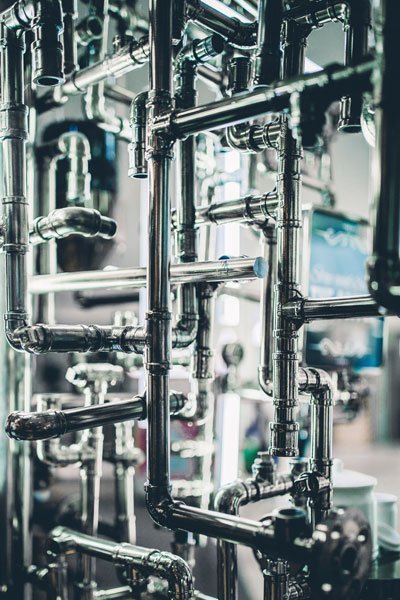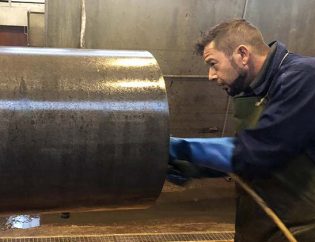
Stainless steel processing is a concept that we take for granted today. All around us, every day, all day long, we are surrounded by stainless steel objects, which almost always fail to catch our eye. And yet, without a material like this, the world would be very different from the way we know it today.
Not only would there not be a whole range of conveniences, but also things that are absolutely essential.
Fortunately, people have learned to work with stainless steel and use it in a wide variety of contexts. But how has he managed to turn a raw material into a ductile and malleable substance that can be shaped into the most diverse shapes?
Stainless steel processing: a journey with the most useful and resistant material
Try counting, from the moment you open your eyes in the morning, how many steel objects you recognise. The alarm clock? The pot on which you boil your milk? The rod where the clothes hang in your wardrobe? The shower hose? The door handle? The bus pole? The chair in the office? The gate at home? We could go on and on!
Why is stainless steel so present in our lives? Because it is a material that has a number of advantages over many others. Stainless steel is actually an alloy, patented in 1872 by the Englishmen Woods and Clark, but only industrialised in 1913 for the production of firearms.
Since then, stainless steel processing has become increasingly important, as the material is also used for everyday objects.
Characteristics of stainless steel
So why does this alloy have better characteristics? Because it combines the strength of some elements with the ductility of others.
It is a very strong alloy and an excellent thermal conductor. This makes stainless steel processing very common in the automotive sector, as well as in kitchen products, for example.
The term ‘stainless’ is misleading. In fact, this steel is also oxidisable, and if it is not treated properly it will soon corrode.
It is commonly referred to as stainless steel because, unlike iron or carbon steel, it has a passivating layer on its surface, composed of molecular-sized oxides, which should protect its internal structure.
The problem is that this protective layer is very often unstable, not very dense or uneven, which means that steel is subject to corrosion just like other materials.
For this reason, stainless steel processing intervenes artificially.
Stainless steel processing and pickling and passivation treatment
Making this material ‘impervious’ to corrosion is the only way to be able to use it in the everyday context: not only water, in fact, but also simple air leads, over time, to corrosion phenomena.
All objects that are therefore exposed to corrosive objects, if they are to have a long life, must undergo stainless steel processing. Among these, the most common are pickling and passivation, which we at Bama carry out in our Turbigo plant or, in some cases, even on site.
Pickling
Stainless steel processing, known as pickling, is a procedure that consists of “stripping” the material of its most superficial layer, thus making it ready for subsequent passivation.
Pickling generally takes place after degreasing, which is a deep cleaning of all oil and grease residues from previous processing.
Pickling also deals with the removal of residues, particularly oxides. If passivation were not carried out on a perfectly treated surface, corrosion would easily arrive from the inside.
Pickling can be carried out using different techniques, the most common being immersion pickling. Special tanks are used that contain a pickling substance, which acts by removing the oxides from the surface.
In some cases, such as particularly large objects or those with hard-to-reach areas, a manual technique can be used, using a spray gun containing the pickling substance.
Passivation
After the material has gone through the pickling process, the next step is passivation. This processing of stainless steel has a reverse mode, since instead of removing a layer, it adds it. And, paradoxically, this layer consists precisely of oxides.
By creating a compact and uniform layer, the oxides create a kind of protection for the inner layers. For this process to work, the layer must be:
- Compact
- Dense
- Of uniform thickness.
This can be achieved by immersion passivation, which uses passivating acid solutions to create the oxide layer.
Passivation can also be carried out in manual mode, using a spray gun.
It is important, with both techniques, to carefully study the frame for the immersion. The point of contact must be as small as possible, so that the entire surface of the object is reached.
In our headquarters we have large tanks for passivation, but if the object is too large or cannot be transported, we can also carry out the treatment directly on site.
In both passivation and pickling, acidic substances are used, which are the only substances capable of removing/adding particles.
Nevertheless, we at Bama always try to use substances that are as sustainable as possible, as we have done with various products that we have designed and marketed ourselves.
Other treatments
Stainless steel processing is almost complete at this point: some treatments remain, such as electropolishing, which removes burrs and imperfections.
The stainless steel is cleaned, protected and polished, and ready to meet industrial or private needs for a long period of time.




